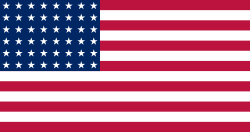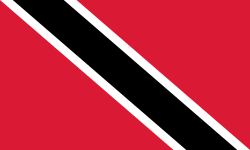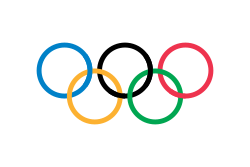Harold Abrahams
| Harold Abrahams | |
|---|---|
 | |
| Narození | 15. prosince 1899 Bedford |
| Úmrtí | 14. ledna 1978 (ve věku 78 let) Enfield |
| Alma mater | Bedford School Repton School Gonville and Caius College |
| Povolání | atlet, sprinter, advokát a novinář |
| Zaměstnavatel | BBC |
| Ocenění | komandér Řádu britského impéria (1957) |
| Příbuzní | Sidney Abrahams[1] a Adolphe Abrahams[1] (sourozenci) |
| Některá data mohou pocházet z datové položky. | |
| Přehled medailí | ||
|---|---|---|
| zlato | LOH 1924 | běh na 100 m |
| stříbro | LOH 1924 | běh na 4 x 100 m |
Harold Maurice Abrahams (15. prosince 1899 Bedford – 14. ledna 1978 Londýn) byl britský atlet, sprinter, olympijský vítěz v běhu na 100 metrů z roku 1924.
Sportovní
Narodil se v rodině židovských přistěhovalců z Litvy. Studoval právo na univerzitě v Cambridge, kde se současně věnoval atletice - sprintům a skoku do dálky. Startoval na olympiádě v Antverpách v roce 1920. Byl zde členem štafety na 4 x 100 metrů, která skončila čtvrtá, v bězích na 100 a 200 metrů i ve skoku do dálky nezaznamenal úspěch. Měsíc před pařížskou olympiádou v roce 1924 vylepšil britský rekord ve skoku do dálky na 737 cm, který vydržel až do roku 1956. Na olympiádě zvítězil v běhu na 100 metrů, byl členem stříbrné štafety na 4 x 100 metrů a skončil šestý v běhu na 200 metrů. O rok později si zlomil nohu a ukončil sportovní kariéru. Poté pracoval řadu let jako sportovní novinář. Historii startu Abrahhamse a jeho soupeře Liddela na pařížské olympiádě popisuje film Ohnivé vozy, který obdržel čtyři Oscary.
Reference
- ↑ a b FamilySearch Family Tree. Dostupné online. [cit. 2023-12-19]
Externí odkazy
 Obrázky, zvuky či videa k tématu Harold Abrahams na Wikimedia Commons
Obrázky, zvuky či videa k tématu Harold Abrahams na Wikimedia Commons - Harold Abrahams v databázi Olympedia (anglicky)
Média použitá na této stránce
Olympic Rings without "rims" (gaps between the rings), As used, eg. in the logos of the 2008 and 2016 Olympics. The colour scheme applied here was specified in 2023 guidelines.
Olympic Rings without "rims" (gaps between the rings), As used, eg. in the logos of the 2008 and 2016 Olympics. The colour scheme applied here was specified in 2023 guidelines.
US Flag with 48 stars. In use for 47 years from July 4, 1912, to July 3, 1959.
The Canadian Red Ensign used between 1921 and 1957.
This image has compared for accuracy (mainly colors) using an image from World Statesmen. The only change is making the maple leaves green from red. This image has compared for accuracy (mainly colors) using an image from World Statesmen. The most recent version of this image has changed the harp into one with a female figure; see [http://flagspot.net/flags/ca-1921.html FOTW
Flag of the unified Team of Germany for the Olympic Games, 1960–1968.
(c) I, Cmapm, CC BY-SA 3.0
The flag of the Soviet Union (1955-1991) using a darker shade of red.

(c) I, Cmapm, CC BY-SA 3.0
The flag of the Soviet Union (1955-1991) using a darker shade of red.

Olympijská vlajka
Flag of Jamaica. “The sunshine, the land is green, and the people are strong and bold” is the symbolism of the colours of the flag. GOLD represents the natural wealth and beauty of sunlight; GREEN represents hope and agricultural resources; BLACK represents the strength and creativity of the people. The original symbolism, however, was "Hardships there are, but the land is green, and the sun shineth", where BLACK represented the hardships being faced.
US Flag with 46 stars. In use 4 July 1908–3 July 1912. Created by jacobolus using Adobe Illustrator, and released into the public domain.
Other version: Image:US 46 Star Flag.svgUS Flag with 44 stars. In use 4 July 1891–3 July 1896. Created by jacobolus using Adobe Illustrator, and released into the public domain.
US Flag with 45 stars. In use 4 July 1896–3 July 1908. Created by jacobolus using Adobe Illustrator, and released into the public domain. This flag was used during the Spanish-American War.
Harold Abrahams rests between events during the 1924 Olympic Games in Paris. Abrahams won the gold medal in the 100 metres in a time of 10.6 seconds and a silver medal in the 4 x 100 metres relay.















